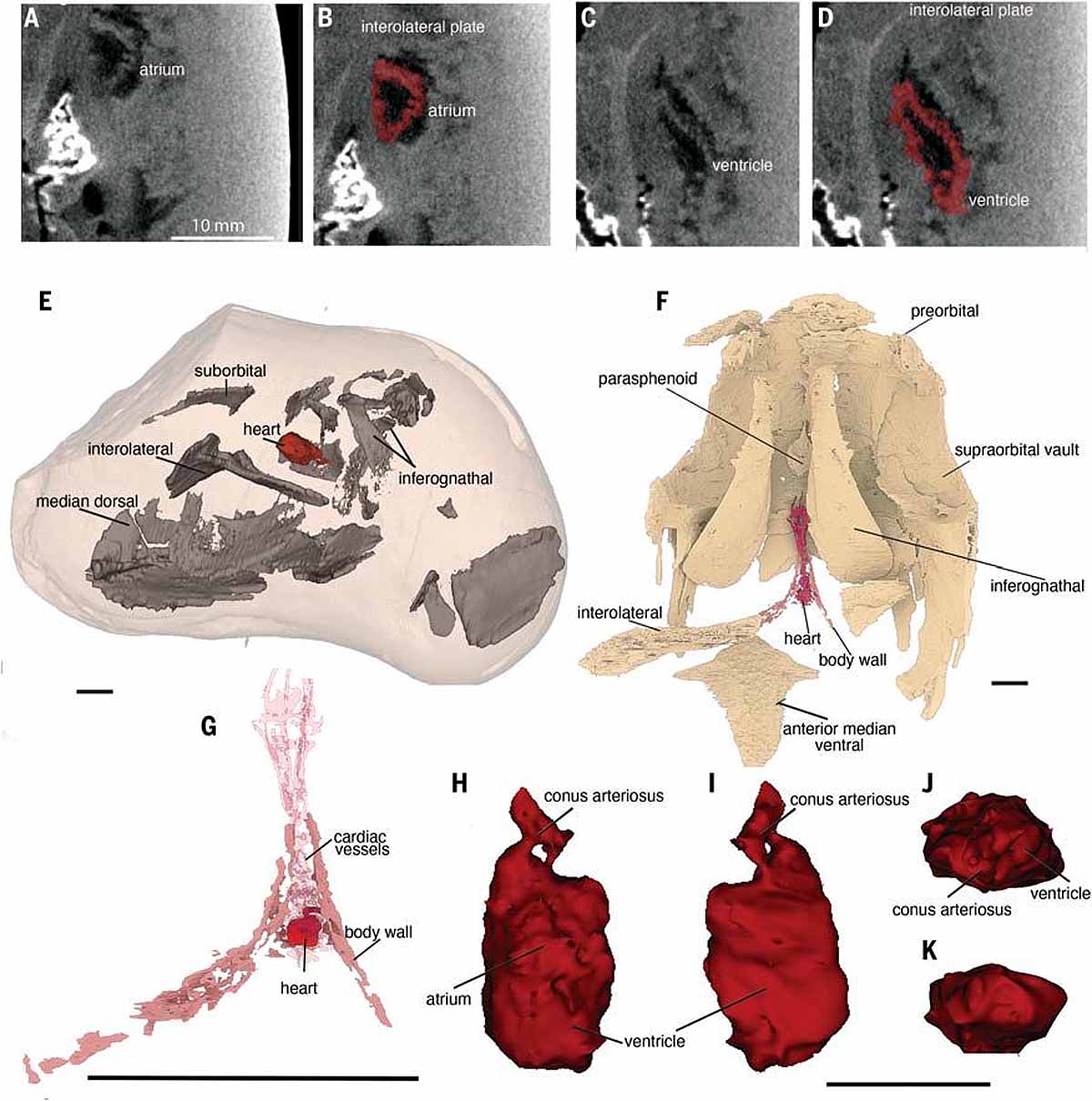Most living beings in the world have a heart. But recently scientists have discovered the oldest heart. It is a fossil. But completely safe. This heart belongs to a creature with a backbone. When the scientists did its 3D scanning, they were surprised to see the condition of the organs inside the heart. Now, this heart does not work but every part of it was interconnected. Let us know which creature of this heart was and how old is its age.
Scientists have named this heart Arthrodire Heart. It is about 380 million years old i.e. 38 crore years old. This is the heart of the armored fish, which means a fish with strong armor-like skin. Once this heart must have been bleeding, but now it is filled with only minerals. So much mineral gets accumulated in so many years. Scientists are also surprised that its soft tissues are still protected. So that he could do 3D scanning of it. Study the tissues.
This ancient fish heart was an S-shaped organ. which had two rooms. The smaller chamber was fixed on top of the larger chamber. It was a more modern heart than paleontologists anticipated. Therefore, it is now expected that studying this heart will give deeper information about such old creatures. This will also reveal the mystery of the origin of the neck and head. Simultaneously, the jaw develops. Kate Trinajstick, an archaeologist at Curtin University in Australia, said that I have been studying such fossils for 20 years. But I have not found such a rare thing to date.
Kate pointed out that development is a very slow process. This fossil shows how creatures without jaws became creatures without jaws. Our study has shown that this is the heart of arthrodesis fish. which he put in his mouth. under the gills. Just like sharks have the heart of a fish these days. We got this heart from the Gogo Formation in the north of Western Australia. This place is known for fossils. Many fossils from the Devonian period are present here. Whose age is between 41.92 crores to 35.89 crores years?
In the Devonian period, these fish ruled the seas for about 50 million years. After that, they started disappearing. During this time a fish fossil would have been made. Whose organs were all destroyed, but the heart became a fossil due to the accumulation of minerals before it decayed? Kate told that to peek inside this fossil, we did not need to break or break it. We 3D scanned it. Which revealed its interiors. Also figured out how it would work.
Per Alberg, a paleontologist at Uppsala University in Sweden, said: “We don’t expect the soft heart tissue of any fish found in Gogo to be preserved in this way.” Soft tissue fossils are usually flat. Like a plate but this heart is in 3D shape. That is, in its original form. If we had gotten this heart two decades ago, we would not have been able to test it because then we did not have such technology and scanners. The study of this heart was carried out with the help of the Australian Organization for Nuclear Science and Technology and the European Synchrotron Radiation Facility in France. in order to scan.
Per Alberg explained that the inner parts of this heart contained a mixture of different minerals everywhere. That is, instead of blood, minerals are full. Because of this heart was not spoiled. The study of this heart also tells us that the fish of that time had very sharp bones. The outer skin was as strong as a shield. This study has recently been published in the journal Science.
Read: Alien Fish: Alien-like fish seen in the ocean, bright eyes like radium surprised scientists
|
|
 Google News Google News |
Click Here |
 Facebook Page Facebook Page |
Click Here |
 Instagram Instagram |
Click Here |
 Twitter Twitter |
Click Here |





